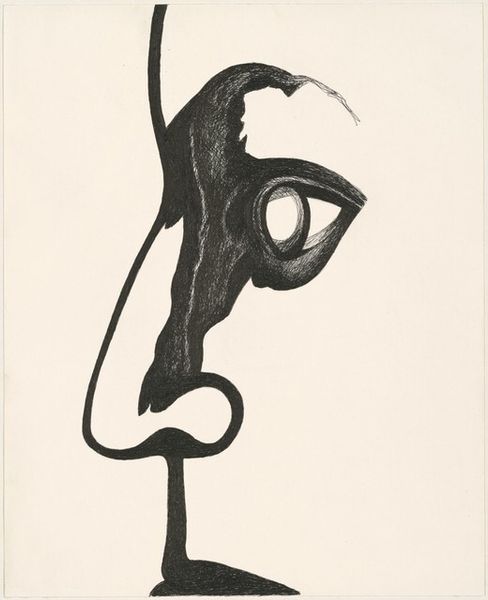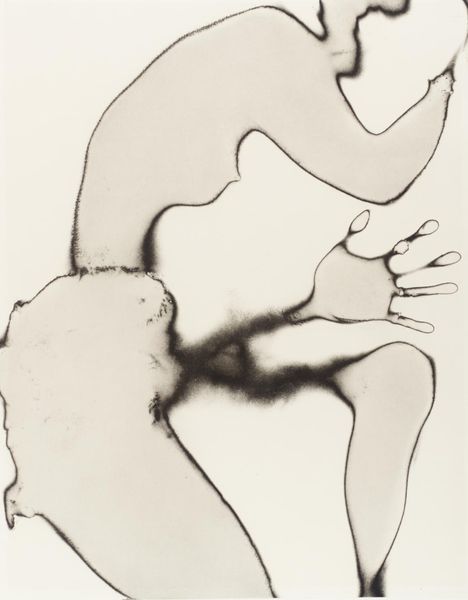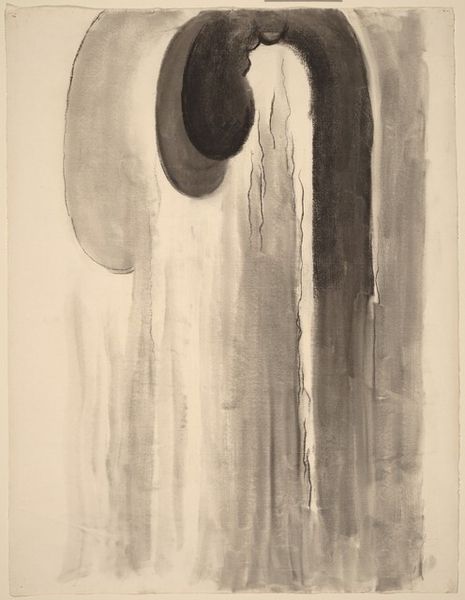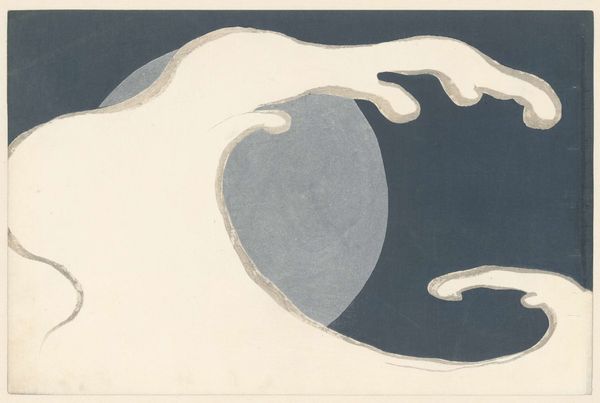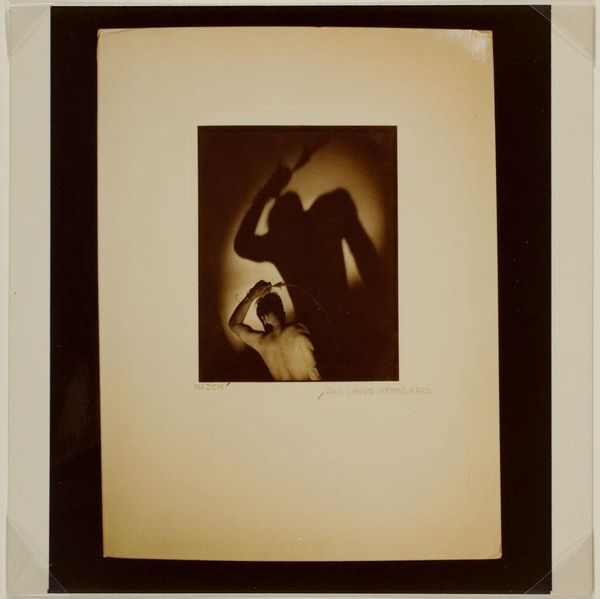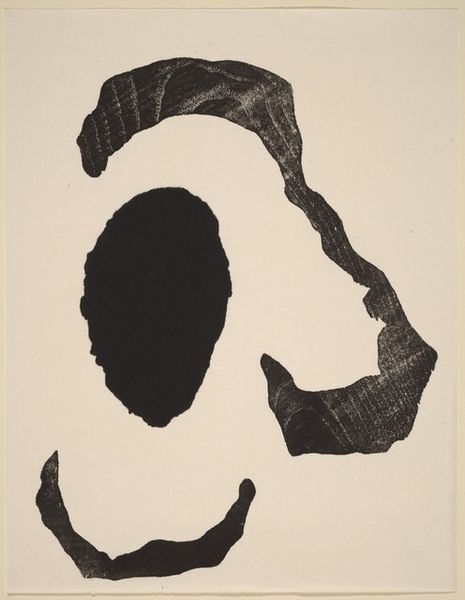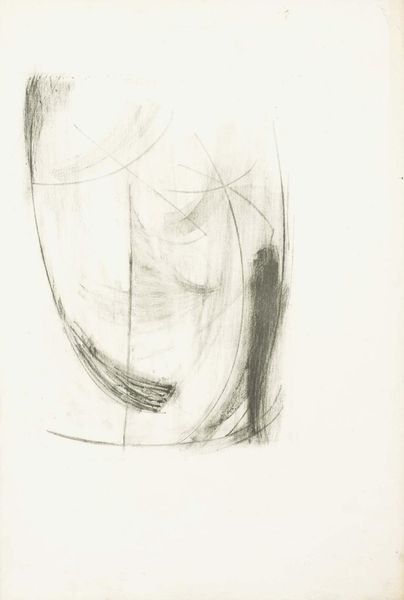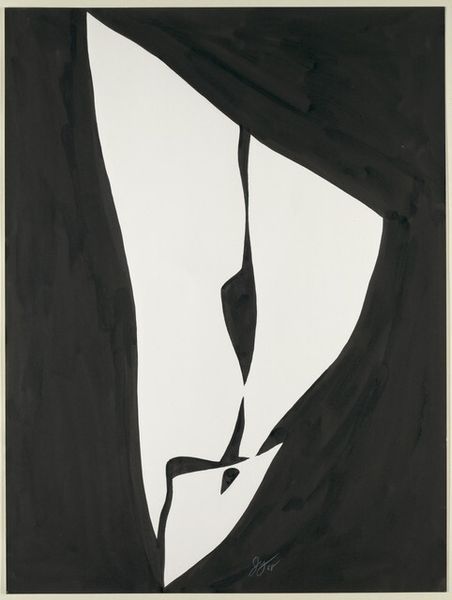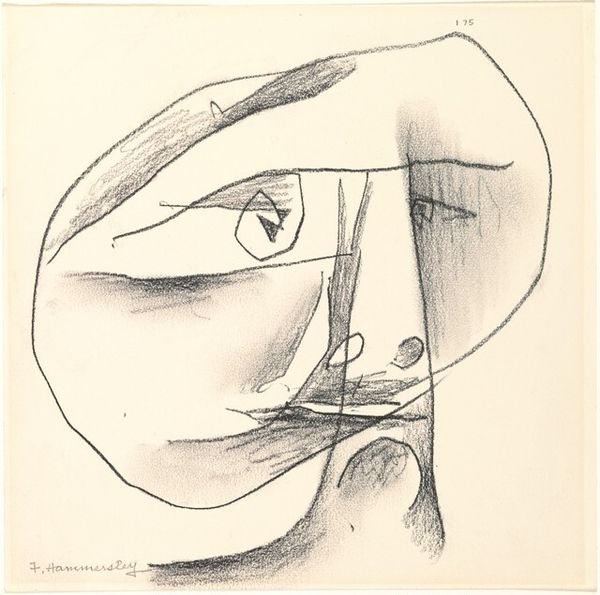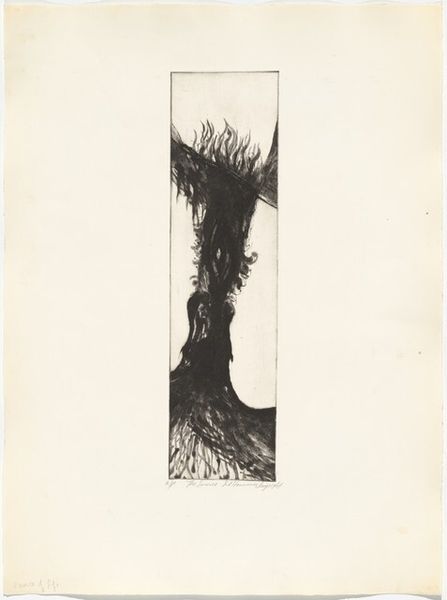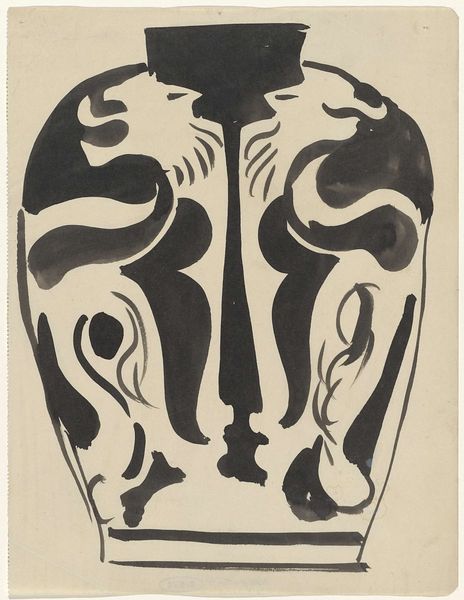
drawing, print
#
portrait
#
drawing
# print
#
caricature
#
figuration
Dimensions: plate: 54.8 x 70.4 cm (21 9/16 x 27 11/16 in.) sheet: 63.2 x 84.7 cm (24 7/8 x 33 3/8 in.)
Copyright: National Gallery of Art: CC0 1.0
Curator: This is Leonard Baskin's "Betrayal" from 1969, a drawing and print. What stands out to you when you look at it? Editor: The stark contrast between the black background and the almost luminous figure really grabs me. It feels... unfinished, raw. How do you interpret this work? Curator: Well, consider Baskin's engagement with humanist themes through the lens of the socio-political climate. What materials are used to convey the idea of betrayal? We see the figure emerging from the dark, the rough, etched lines – suggesting a process of exposure, almost violent uncovering. What betrayal means within consumer culture where individuals are valued merely for productivity and output, where human dignity is systematically eroded by commodification of everything that has value? The medium allows for mass production, dissemination—multiplying and commodifying the feeling of "Betrayal." Editor: So you’re seeing the printing process itself as a kind of parallel to the theme – mass-producing a feeling. That's fascinating. Would Baskin intend the artistic choices of this print such as the medium to align with certain philosophical and economic structures of the 1960s, given the mass consumption? Curator: Precisely! The very act of creating a print – something reproducible, something potentially consumed en masse – brings another layer of complexity to the title "Betrayal". It forces us to consider: betrayed by whom? Betrayed by what? Are we, the viewers, complicit through our consumption of the image? Editor: This completely shifts how I view the piece! Initially, I just saw a somber portrait. Curator: Understanding Baskin's artistic labor, and then the means of reproducing and circulating that image challenges us to think critically about the societal and economic underpinnings of art itself. It's no longer just an isolated emotional expression. Editor: Thank you! I had no idea of the labor associated with mass consumption in that era. Curator: Absolutely. That is materialism: understanding that meaning can arise when we see all aspects of the work that relate to historical, social, or cultural values.
Comments
No comments
Be the first to comment and join the conversation on the ultimate creative platform.
